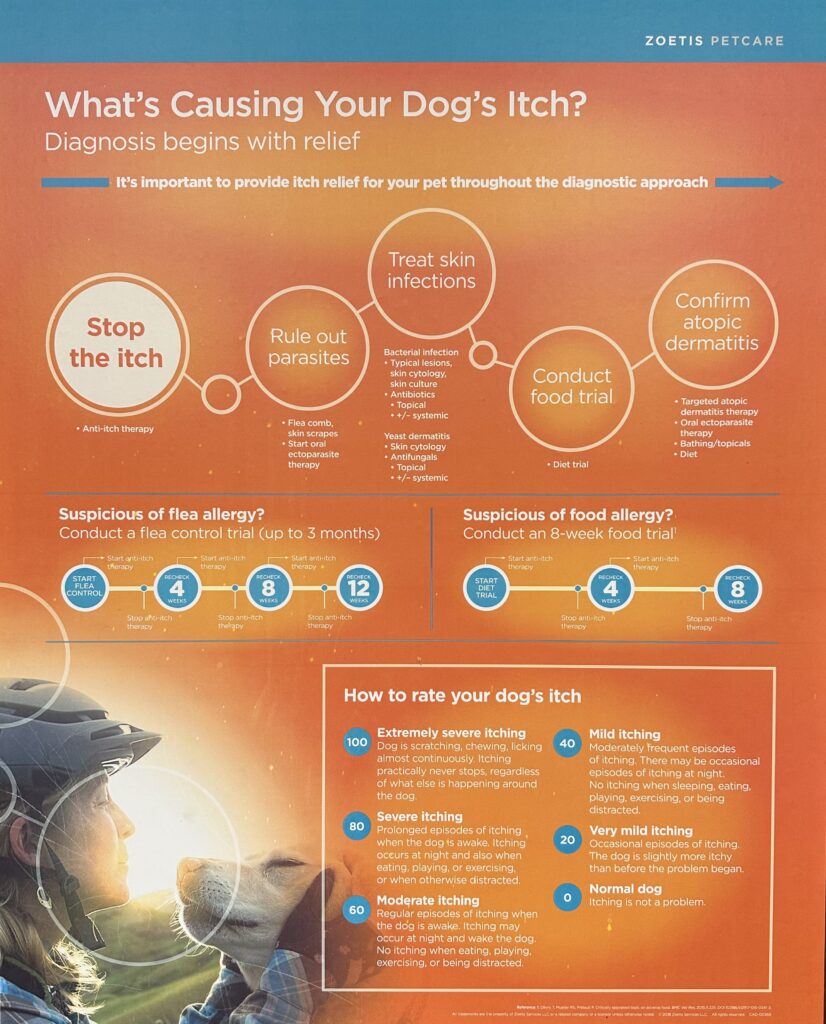Merry Christmas & Happy New Year
We are coming to the end of 2025 and wanted to take this time to thank you for choosing us. We know you have many options to receive veterinary care at other locations. Many of you travel past several practices to make your way here. We do not take that for granted. Our clients have certainly become friends over the years, and we look forward to seeing each of you in the years to come. I wanted to share some of the google reviews that we have had in the past year. I feel they speak louder than anything about Winterset Veterinary Center and the staff.
This vet clinic and all the staff is amazing. We are new to farming and have had two experiences we
couldn’t handle on our own, we got the assistance we needed immediately at a beyond reasonable
price. I honestly didn’t believe this type of “small town” feel places still existed.
10/10 the best Vet Center! I make the drive from Ankeny because the care they provide for my dog is
exceptional!
Dr. Jim and Dr. Lonna are the best!!! Dr. Lonna took a great deal of time to discuss our puppies issues
we are having and showed us handling techniques to help. She answered all our questions and
concerns and never makes us feel like she’s in a hurry. Our pup’s welfare is her greatest concern. The
entire staff is wonderful!
So very pleased with all of the staff!! It was our first visit and could not be happier! So friendly and
welcoming and appreciated Dr Jim talking WITH us as opposed to just talking down to us! So happy
we switched vets!
Thank you!
Update 4/11/25: These guys are still just as awesome as they were a year ago!
The staff are amazing! The front desk gals make scheduling pain free and get you checked in and out
in no time. Drs. truly care about your fur babies and take the time to explain what’s going on with your
pet. It’s worth the drive and I’m glad we found them!
The vet clinic staff is amazing, especially the ladies up front!! I thought I had made an appointment for
Wednesday morning, but I didn’t and still showed up. They were able to get our 3 dogs in right away!
Dr. Jim did an amazing job with all 3 dogs, clipping nails and giving vaccines. Everyone in the clinic is
always so sweet and welcoming. They don’t try to upsell you on services or products which is
refreshing. We will be back soon! 🙂
These comments are appreciated. Our google rating is 4.8. We do not solicit these responses and
have had only 14 people rate us at 4 and 7 people rate us at 1 out of the 212 reviews. The rest have
been 5 stars. THANK YOU TO OUR CLIENTS NEW AND OLD FOR THESE REVIEWS.
We use an online resource called Allydvm to send reminders about appointments. They also send
out random follow up requests for reviews on a 1 – 10 scale. We have been using their system since
the fall of 2017. Before the text and email reminders we sent out reminder cards. Anyone remember
them? I think they got lost before they even got to your mailbox. Anyway, in the last 8 years we have
had 1705 (9,10) ratings, 28 (7,8) ratings, and 14 <6 ratings. That gives us an average of 9.87.
THANK YOU AGAIN FOR THAT FEEDBACK. We strive to listen to our clients needs and respond to their concerns as best we can. If you feel we have failed, we want to know. We would like to have a
conversation with you to determine where our lines of communication broke down. We are all
humans. Misunderstandings will happen and we want an opportunity to make things right. It is so
easy to send out a post or a rant criticizing people or businesses these days. What does that
accomplish? Certainly, your issue is not resolved. Contacting that person or business and showing
kindness and respect will get you much farther. Maybe even get the resolution that you were hoping
for. Let’s work hard in 2026 to find a way to show kindness to people and businesses.
We are thankful for each of you sharing your positive experiences at Winterset Veterinary Center so
friends and family will come with their critters. Social media presence has changed how people find
the businesses they frequent. Yet Dr. Jim Potttebaum and I are old school and still feel a personal
referral is the best complement we can receive. Our staff do an excellent job of welcoming new and
seasoned clients alike. Dr. Jim and I would be lost without our staff. We hope you let them know
that you come to Winterset Veterinary Center because they are awesome too.
Cheetoe is approaching 6 years of age. He is a constant presence at Winterset Veterinary Center.
Several clients do look forward to seeing him when they come to our practice. His Facebook page is
Hemmingway Winterset (named after our first polydactyl cat). Feel free to like his page or that of
Winterset Veterinary Center. We post dogs found within the city of Winterset on our site and my
monthly blogs. Sometimes we post photos or videos of Cheetoe being the cute cuddly guy he is.
Our website wintersetvet.com has been a good source of information for prospective clients. We
attempt to keep it updated and pertinent for all clients that are looking for information. If ever you
have suggestions on our social media sites, please feel free to discuss those with us. Dr. Jim and I
never learned these skill sets in college so we do the best we can. We are excited to be offering
grooming once again at Winterset Veterinary Center. Ashley has posted some of her grooms on our
website and Facebook page but feel free to call and set up an appointment with her in the New Year.
Many have indicated they wished we had grooming again. We listened. Now you can drop your dog
or cat off for grooming and update vaccinations or preventions at the same time. Convenience is
something we all get excited about.
As we wind down our 2025, we just want our clients to know how much we appreciate them.
Whether you have been here since the very beginning in 1984 or have joined us in the last month, you
are all important. We thank you for choosing us and look forward to seeing you in the new year.
Merry Christmas and Happy New Year!







